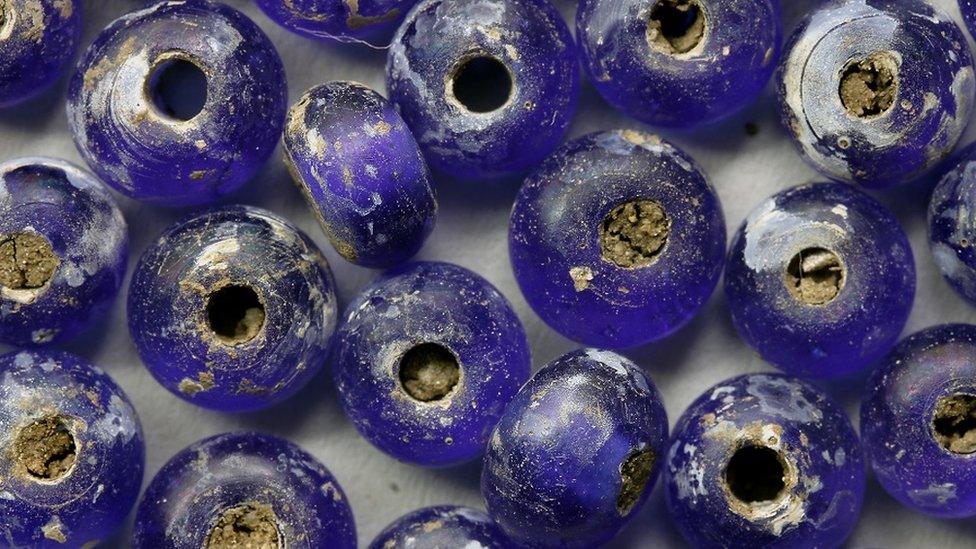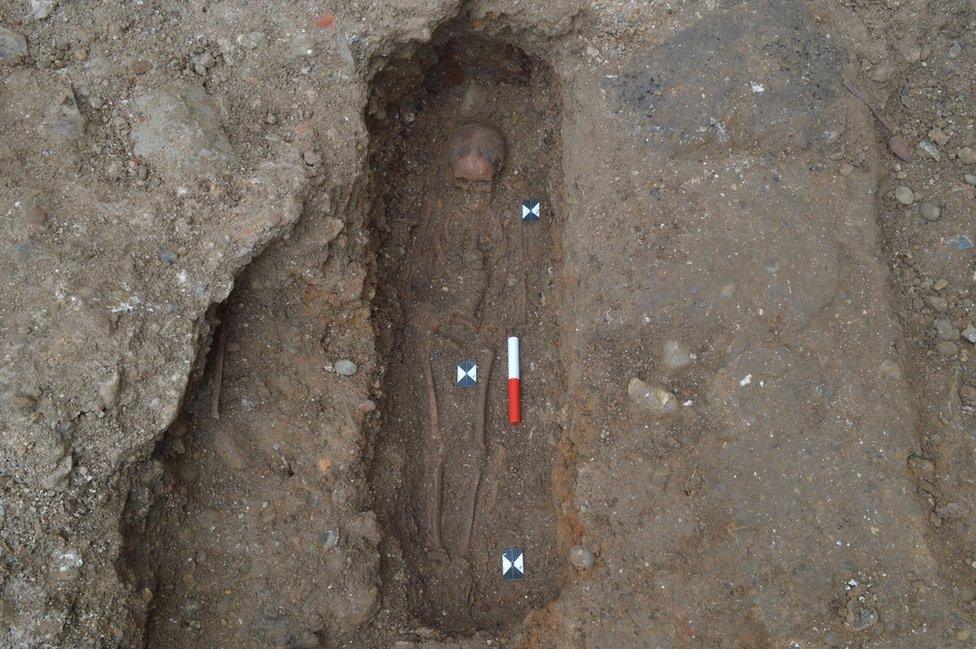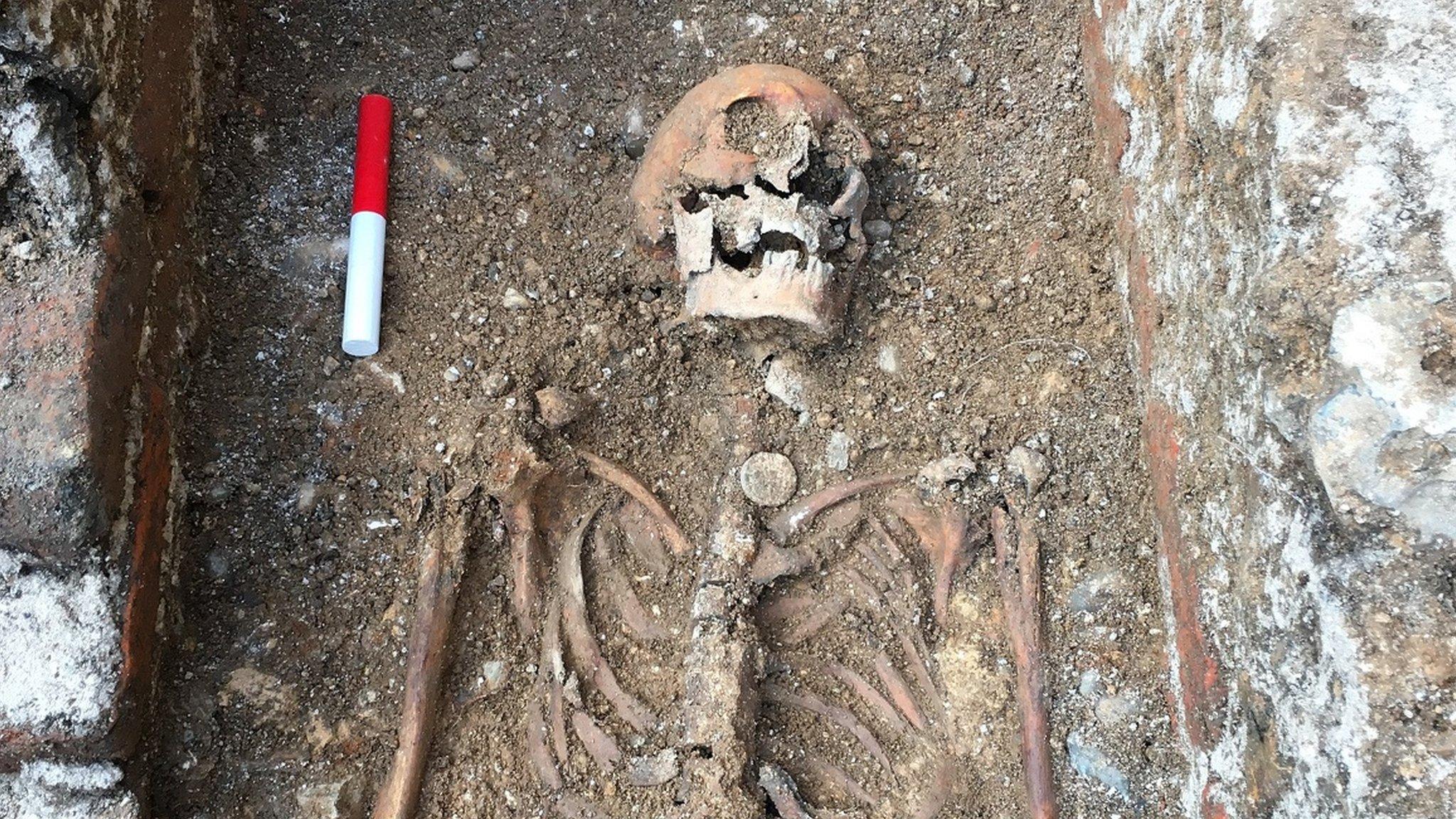St Albans Cathedral rosary bead remains 'mystery'
- Published

The rosary beads were found wrapped round the right hand of a "young individual"
Archaeologists have described the discovery of a child's body with what are thought to be rosary beads wrapped round their hand as "a mystery".
The remains were unearthed during excavation work at St Albans Cathedral.
Experts said rosary beads would suggest a Catholic burial in what appeared to be a Church of England cemetery.
Site director Ross Lane said it was "unusual" and was the only one of the 80 excavated graves to have "artefacts associated with them".
"This suggests this individual was Catholic in an otherwise majority Protestant burial ground," he said.
Further scientific tests will be carried out to find out why it might have been there, he added.

Experts think it is a Catholic burial within the late church of England cemetery dated somewhere between 1750 and 1850.
The Canterbury Archaeological Trust has been excavating the site for three months ahead of the construction of a new visitor centre.
Records suggest the remains of 170 people were interred in the church yard which dates from about 1750 to 1850.
Scientific analysis
Mr Lane said the beads were "wrapped" round the right hand of a "young individual" and left "trailing down their leg".
"This would be a Catholic thing... it's a mystery," he said.
"There could be several reasons for it, it could be an earlier burial, or it could be that this was a visitor to St Albans from further afield and they've just been caught in an epidemic and buried."
St Albans Cathedral dates from Norman times and is the oldest place of continuous Christian worship in the country.
It stands on the site where Britain's first saint, St Alban, a citizen of Roman Verulamium, was martyred by the Romans.
Earlier this month, archaeologists uncovered the lost grave of Abbot Wheathampstead at the site.
- Published7 December 2017
